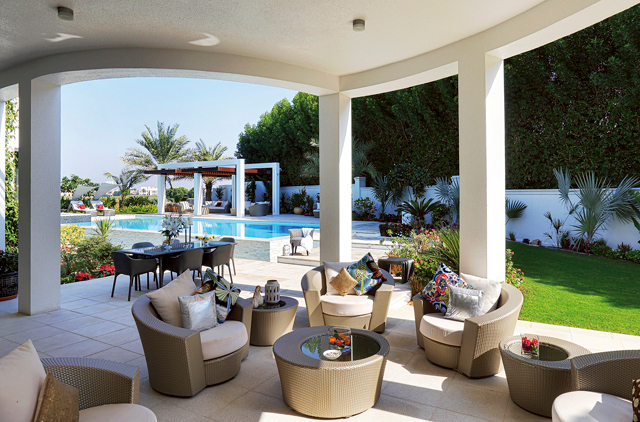Dubai
For the right price and property, overseas investors are still putting their money in Dubai realty. Recently, a seven-bedroom villa at Emirates Hills changed hands for a second time in seven months … and at a handsome premium.
The property — all of 20,213 square feet — was bought last December for Dh18.92 million and has now been bought again by an Indian buyer for Dh23.3 million. It is located close to the Montgomerie Golf Club.
“Within six months we have sold the same villa in the high-end segment twice,” said Riyaz Merchant, CEO of Realty Force. “If your property is priced right and has the right location, it will get a buyer. The market dynamics don’t really change a buyer’s intent.”
In the first six months, overseas investors were fairly active in the transaction flows, with the Dubai Land Department registering $1.6 billion in deals involving Indians and $1 billion from Saudi buyers. And buyers from Pakistan are right up there when it comes to real estate exposures in Dubai.
With the Pakistani rupee remaining under pressure, and the upcoming elections adding to the uncertainty over the economy, there investors see good reason to retain their funds here.
With good reason too. On an annualised basis, Pakistani investors in Dubai property managed the highest returns between 2012-2018, according to a new report from GCP-Reidin. Taking currency impact alone, Pakistani investors benefited to the tune of a 54 per cent increase if they had bought property in Dubai in 2012 and sold now. For Indian buyers, the currency gains would have been around 48 per cent and 37 per cent for British investors.
For instance, if a Pakistani investor had put up Dh2 million on a property in Dubai back in January of 2012, he would have seen value gains of PR41.02 million if he sold it in June 2018 if it was sold for Dh2.88 million. For an Indian investor, this would have meant gains of Rs23.86 million.
“A key analysis for international buyers is currency movements, as it effects their total returns when they repatriate funds back to their home country,” the report finds. “We witness that since 2012, the sterling, Pakistan rupee and Indian rupee have devalued between 16-28 per cent.
“Whilst real estate (and equity) asset prices (in the UAE) have been sluggish for the better part of three years, it appears as if the rebound in economic activity in response to stimulus measures is setting the stage for a rebound.”
Back in January 2012, a Pakistani rupee would have fetched 94.5 to the dollar, while it was at 1.57 for the pound and 55.5 to the Indian rupee. In July, the respective figures relative to the dollar are at 121.5, 1.32 and 68.7.
“If your base currency is the Pakistani rupee, then you have had the greatest return ... partly because it devalued the most during this period,” said Sameer Lakhani, Managing Director at Global Capital Partners. “That is why for currency regimes that are systemically weak, there is a very strong correlation to investing abroad ... and in real estate in Dubai.
“The central bank in Pakistan has tried to shore up the currency, but clearly there is only a limited amount that it can do given the nation’s reserves. Further clarity will be achieved after the elections on July 25 and a likely IMF programme.”













